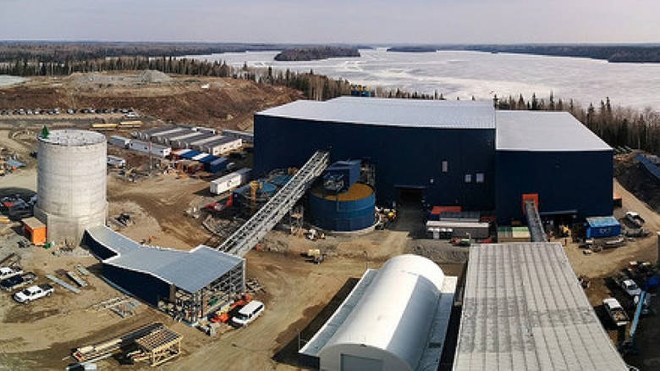Rubicon Minerals is expanding its test mining program at its Phoenix Gold Project, near Red Lake.
The Toronto mine developer, out to reopen a dormant northwestern Ontario mine project, said on April 3 that it’s increasing the size of the bulk sample from its test mining phase at the F2 Gold Deposit by 10,000 tonnes. The sample size is going from 15,000 to 25,000 tonnes to 25,000 tonnes to 30,000 tonnes.
The material will be extracted from three test stopes.
It will allow them to firm up the resource estimate, refine their geological model, determine a mining method, provide material for the mill, and collect cost data to feed into a potential feasibility study of the project.
About 10,000 tonnes of mineralized material is already sitting on the surface from test mining.
Phoenix Gold is a 510-hectare property located in Bateman Township within the Red Lake mining district of northwestern Ontario. It’s centred on the historic McFinley Shaft.
New management at Rubicon has been working for more than a year to rebuild the mineral resource estimate and investor faith in the multi-million-dollar mine development after it was shuttered in the fall of 2015.
The project was fast-tracked into production that year before the area’s geological structure was fully understood.
The blunder, discovered during the trial stoping period of the F2 Gold Deposit, forced the layoff of more than 300 miners and contractors and put the company under creditor protection.
In February, Rubicon raised $10.9 million in flow-through financing for its exploration program.
Armed with that, the company plans to do an additional 10,000 metres of infill and step-out drilling to grow the mineral resource. A priority target is a potential extension known as McFinley Deep, located 500 metres west of the shaft.
Three exploration holes were drilled at two levels of the mine. The company plans to continue limited drilling at the 685-metre level to test the target.
They’re preparing to carve out an additional 280-metre exploration drift at the 610-metre level that runs parallel to the strike of the F2 Deposit. The drift will allow them to efficiently drill off the lower portions of the deposit.
A new mineral resource estimate is due out by the midway point of the year. It’ll factor into their decision whether or not to progress to a feasibility study.
"We believe the expanded 2018 Exploration Program allows us to gather additional data that is critical to potentially improving the classification and growing the mineral resources at the Phoenix Gold Project,” said Rubicon president-CEO George Ogilvie in a statement.
"As we make substantial progress on the Phoenix Gold Project I'm also pleased to see our exploration activities begin in relation to close proximity targets in and around the Phoenix Gold Project."
Besides owning the Phoenix Gold Project, Rubicon controls more than 280 square kilometres of exploration ground in Red Lake and more than 900 square kilometres of mineral property interests in the Long Canyon gold district on the Nevada-Utah border.




